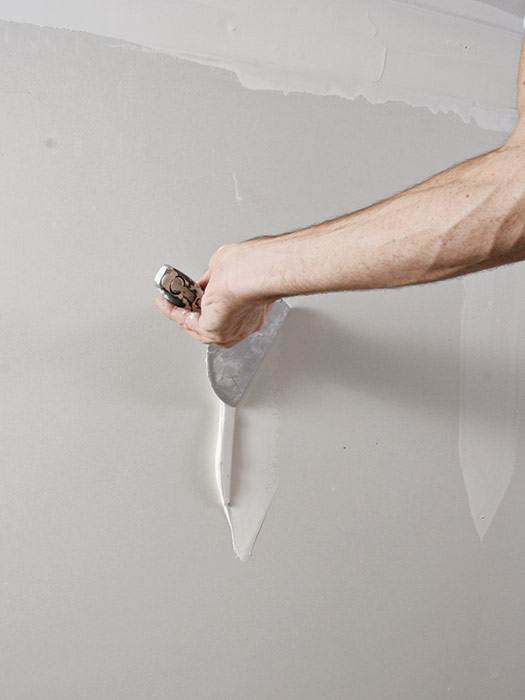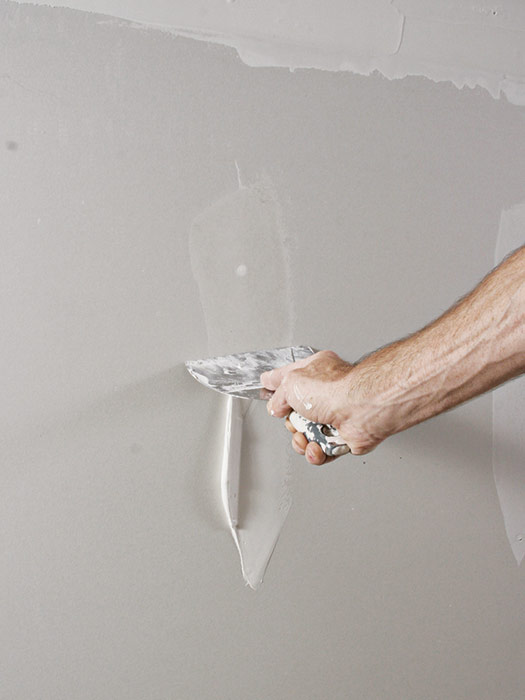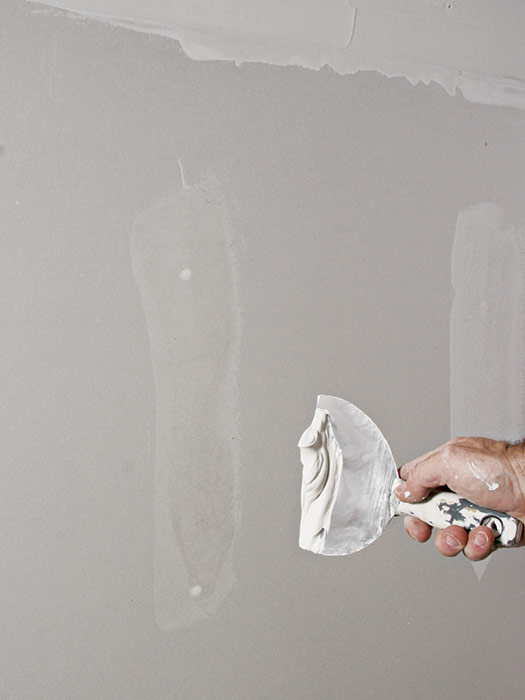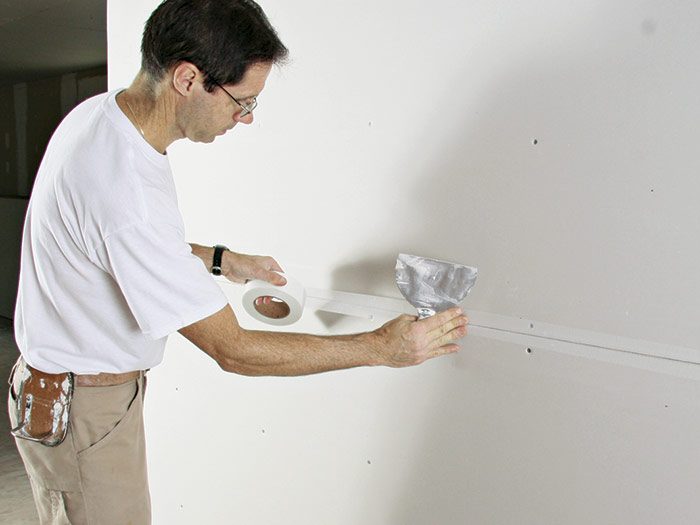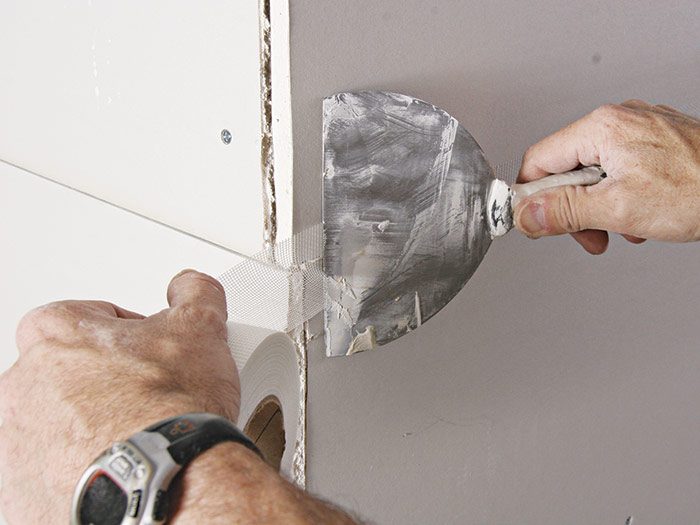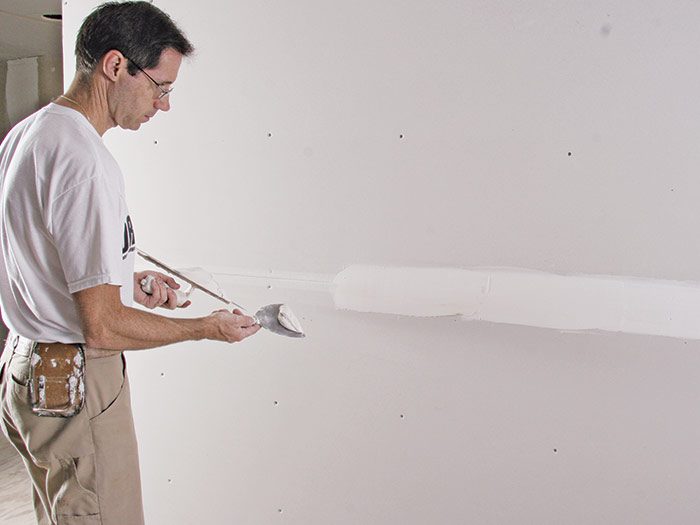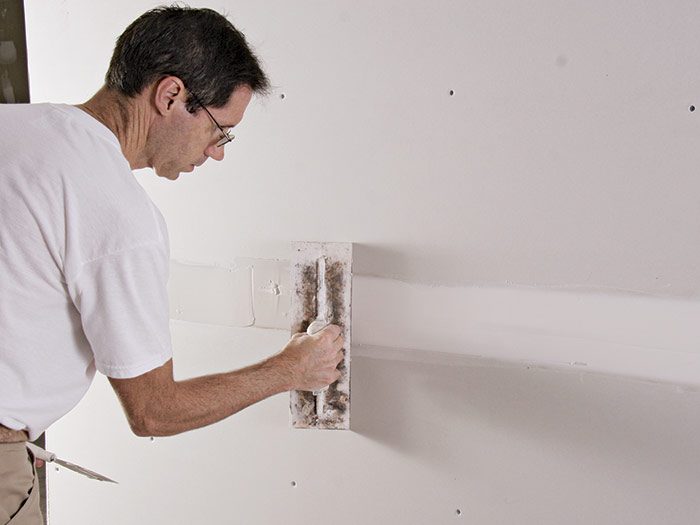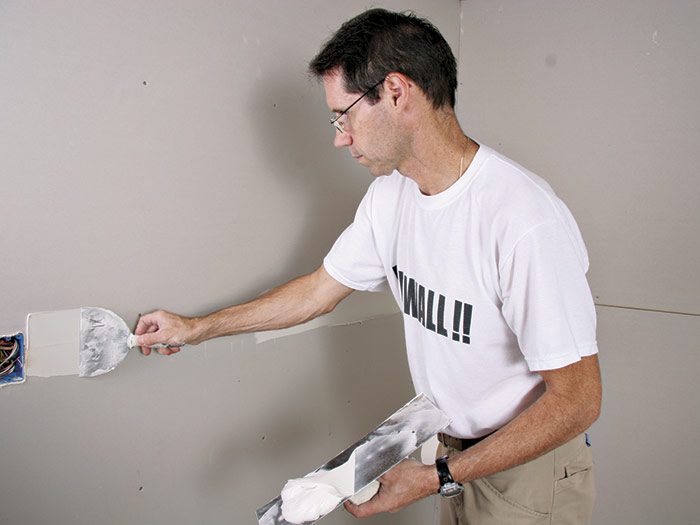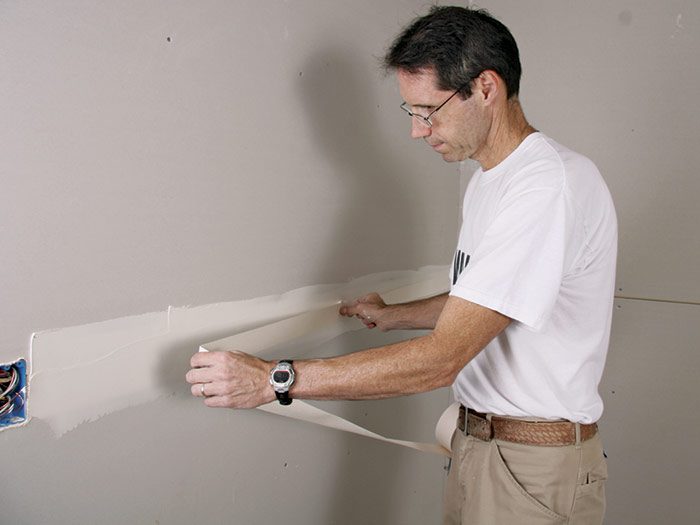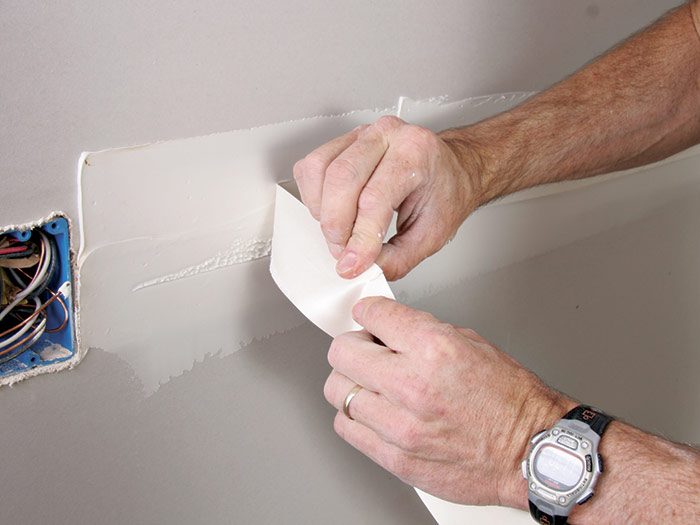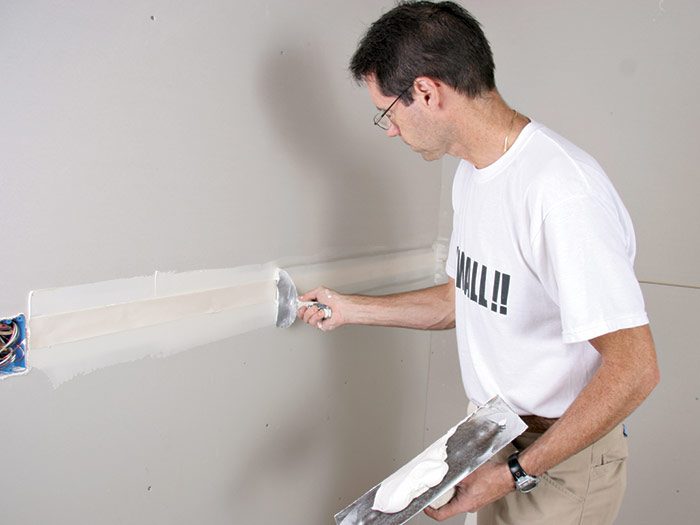Taping Fastener Heads and Seams: First Coat
Work in this order to efficiently tackle the first phase of drywall finishing.
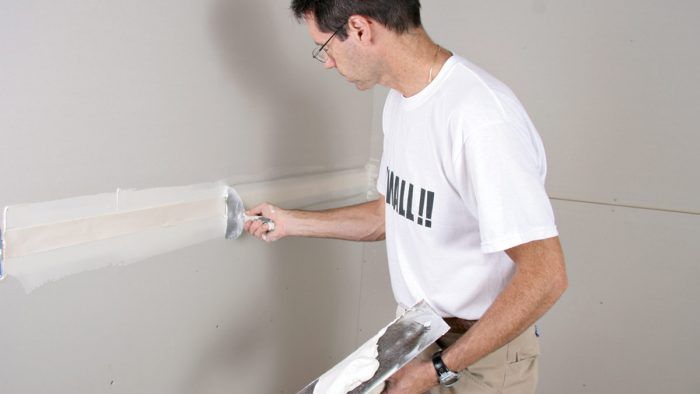
When I start taping a room, I apply a coat of joint compound to all fasteners in the field on a wall, then embed tape on the seams, and then embed tape in the corners. If there is an outside corner, I finish the section by applying a coat of joint compound over the corner bead before progressing to the next wall. This is an efficient way of taping rather than first taping all fasteners, then walking around the job again and taping only seams, and so on. In the interest of clarity, however, I’ll present all the information on taping fasteners, taping seams, taping inside corners, and taping outside corners in separate sections.
Taping Fastener Heads
I like to tape fastener (screw and nail) heads first, so that I don’t accidentally mess up a seam that I’ve already taped. You need only a thin layer of joint compound to conceal the fasteners, and it’s easiest to tape a row of two or three fasteners in a single strip rather than individually. Using a 5-in. or 6-in. taping knife, apply just enough pressure to fill the indentation and leave the face of the drywall panel covered with a thin film of compound. Don’t be tempted to fill the indentation with one thick coat; applying three thin coats of compound and tapering the edges brings the indentations level with the panel surface and requires only minimal sanding. If necessary, apply the second and third coats to fasteners as you apply the second and third coats on the seams.
Taping Seams
There are two types of drywall seams: tapered-edge seams between panels, formed when two long edges of the panels come together, and butted seams, which are created when nontapered panel ends are joined together.
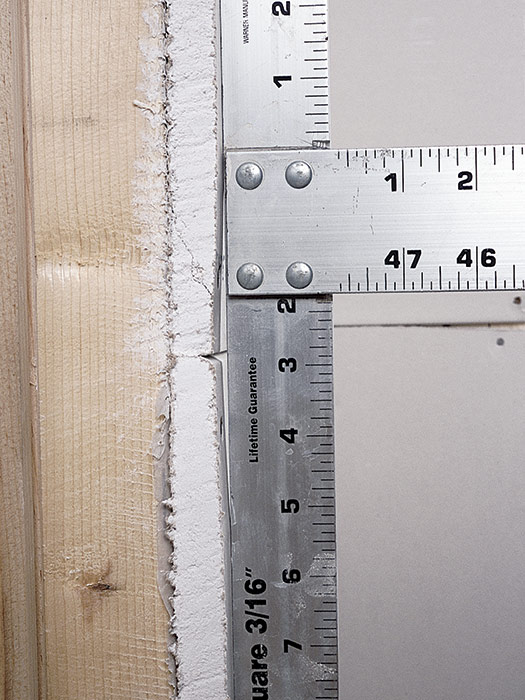
First coat
The seams between drywall panel edges take considerably longer to first-coat than do fastener heads, because the tape has to be embedded in the joint compound. There are two ways to tape these seams: with fiberglass-mesh tape or with paper tape.
Mesh-tape method I often use self-adhesive fiberglass-mesh tape on the tapered-edge seams between panels. Mesh tape is fast and easy to use, and you don’t have to worry about loose tape and air bubbles under the tape, which can be problems with paper tape.
On the downside, most mesh tape is not as strong as paper tape, so it’s important to use the right type of joint compound. You can embed mesh tape in any type of setting-type compound, but if you’re working with drying-type compounds, make sure you use a taping compound, not a topping or an all-purpose compound. I prefer to use a setting-type compound, which is stronger and shrinks and cracks very little when drying.
When using self-adhesive mesh tape, it’s easiest to tape all the joints in the room before applying the compound. Press the tape firmly over the joint so that it lies flat with no wrinkle, and cut it to length with a sharp taping knife or a utility knife. Using a hawk or a large (4-in. by 14-in.) beveled trowel as a palette, apply joint compound to the entire length of the joint with a 5-in. or 6-in. taping knife. A thin, even layer of 1/4-in.-thick compound is all that you need. Don’t worry about the compound being smooth at this point.
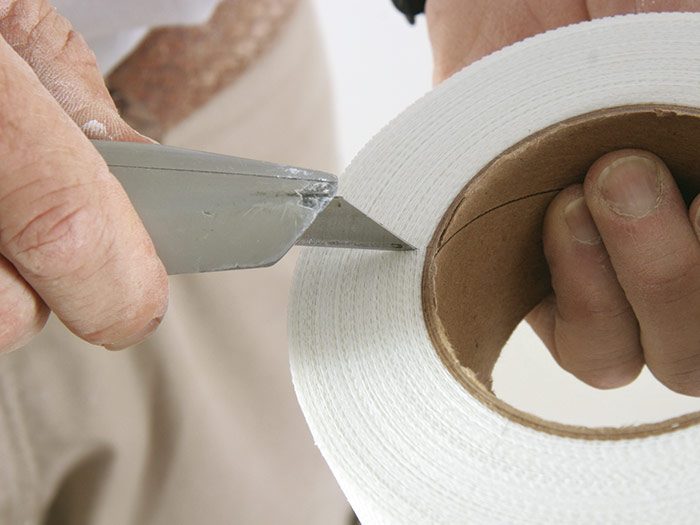
Mesh Tape for Tapered SeamsThough not as strong as paper tape, fiberglass-mesh tape offers plenty of strength along tapered seams. You need only a roll of tape, joint compound, a 4-in. by 14-in. beveled trowel, and a 5-in. or 6-in. taping knife.
|
Now switch to the 4-in. by 14-in. beveled trowel to smooth the compound. With the trowel centered on the seam and held almost flat against the panels, pull the trowel along the joint, smoothing the compound with the back edge. Leave a layer of compound that just covers the tape and fills the recessed areas of the tapered seam. The edges should be fairly smooth and feathered. If a lot of compound builds up in front of the trowel and pushes out around the sides as you smooth the seam, either you have put too much joint compound on the seam or you’re taking too much off. When you’ve finished the seam, the joint compound should be about 3/16 in. thick in the center and 6 in. or less wide from one tapered edge to the other. Remember: The first coat doesn’t have to be perfect—just make sure that you don’t build up the compound too thickly or leave ridges that will make the application of the second coat more difficult.
Paper-tape method Paper tape forms a strong joint on seams when it is used with any type of tape-embedding joint compound. Paper tape used in conjunction with an all-purpose joint compound is the most common way to tape seams (whether they are tapered-edge or butted).
The procedure for embedding paper tape is somewhat different than for mesh tape. Because the paper tape is not self-adhesive, you first have to lay down a ground coat of compound to hold the paper in place. Use a 5-in. or 6-in. taping knife to apply a thin, fairly even layer of joint compound 1/4-in. thick or less along the center of the seam.
Next, center the paper tape on the joint and lightly press it into place. Keep the tape pulled tight and reasonably straight along the joint. Rip the tape to the desired length, making sure that the tape goes far enough into each corner so that the corner tape overlaps the joint tape.
Paper Tape on Tapered SeamsUnlike mesh tape, paper tape is held in place by a thin layer of joint compound that is applied before the tape goes on. On either tapered or butted seams, paper tape can be set in and covered with any type of tape-embedding compound.
|
With the paper tape in position, pull the taping knife along the center of the tape. I usually start at the center of a seam and pull toward each end. (If the joint butts into an inside corner, be careful not to leave too much compound under the tape as you approach the corner to avoid raising a bump.) Keep enough pressure on the knife to properly embed the tape as you go. The pressure on the knife should push the extra compound out from the edges, leaving a layer 1/8 in. thick or less under the tape. Make sure the tape is tight against the panel at the edges. Clean excess compound from along the edges of the joint with the taping knife.
If the paper tape wrinkles or bunches up as you embed it with the taping knife, it’s probably because the initial layer of compound was too thick or was not pulled tight when set in place. If you must use two pieces of tape—on a joint over 16 ft. long, for instance—still start at the center of the tape and work both ways.
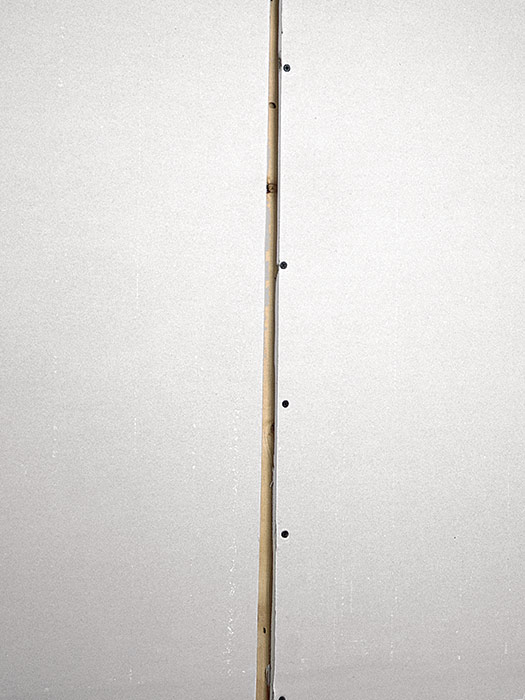 |
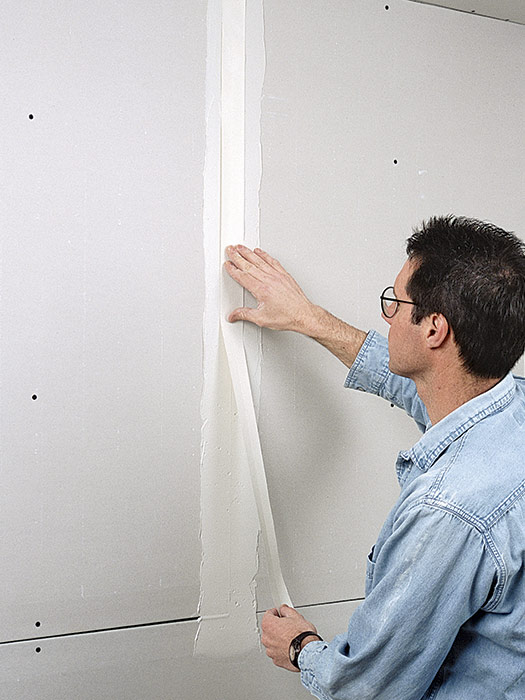 |
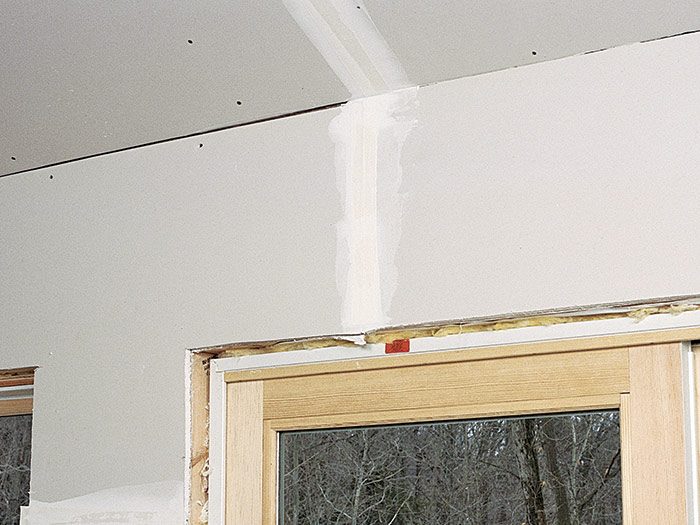 |

